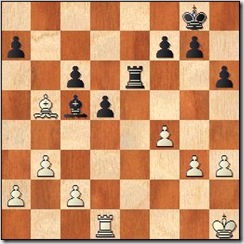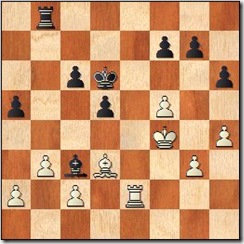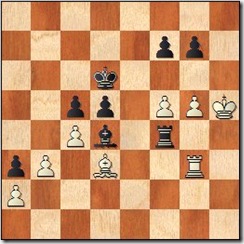As they say, when trying to find a combination, you should always start with a check, since those type of moves are most forcing. So…
Example #1: Broer - Laurentius, 1935
While lazily solving this position, I fell victim to the move order, starting with 1.Bxh7+, which fails since after 1...Nxh7 2. Rd7 Qxd7 Black gets enough material for the queen. The solution is 1. Rd7!! Bxd7 2. Bxh7+! Nxh7 3. Qf7+ Kh8. 4. Ng6x
Example #2: Henneberger – Bernstein, 1934
And again, in my solution I started with 1. Qg4, missing that Bxf5 covers c8 square. The solution is 1. Bg7+!! Rxg7 2. Rc8+ Rg8 3. Qg4!!
 There is no single defence to both Qg7 and Qxg8.
There is no single defence to both Qg7 and Qxg8.
Sometimes you do need to start with a check after all!











